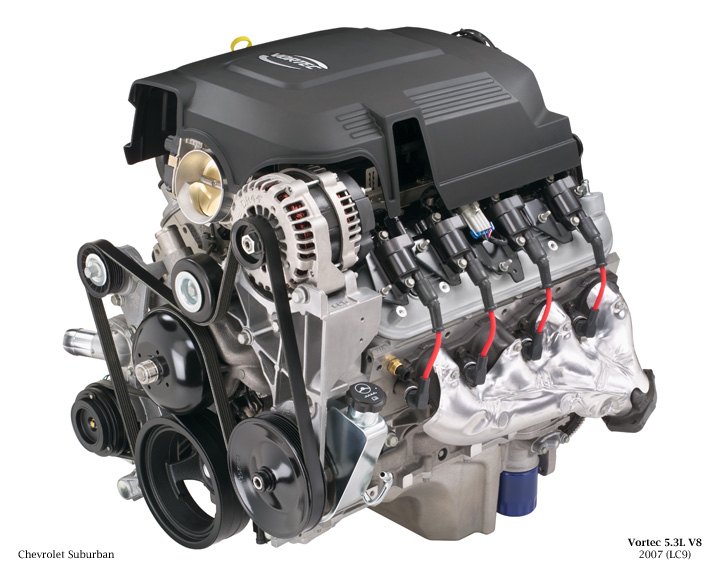Ask The Best And Brightest: Hypermiling A Variable-Displacement V8?
Everett writes in:
I know that each motor, transmission, and car combination has optimums areas of performance for mileage. All the Jetta drivers that swear by idling in 5th gear are a testament to that. With some of the newer V-8 motors, however, finding the sweet spot is a little more problematic. Take for example a GMC Yukon XL, paired with a 5.3L V-8. Because GM designed the motor to shut down four cylinders whenever it could to increase fuel economy, the motor does just that when coasting, during braking, and for short stretches where the motor can maintain the desired speed (provided the driver holds a steady pedal). Is it possible that because the motor would produce more horsepower under the V-4 mode at a higher rpm/road speed, that there is a sweet spot of efficiency at a HIGHER than expected speed? Having a power curve for the V-4 mode of the motor would be a good starting point to know if there is a point where the V-4 mode is revved higher and produces enough power to better maintain highway speeds, but saves gas because four cylinders are shut down. Any ideas if that exists for the actively managed motors out there and what speed that would be?
More by Edward Niedermeyer


































Comments
Join the conversation
A V8 will NEVER have superior economy because of several packaging problems. FIRST - in order to maintain acceptable NVH levels, manufacturers are required to very heavily weight the crankshaft, and because the V8 has unbalanced firing between the cylinder banks (producing the distinctive and much-loved V8 "burble"), they're required to add balance shafts as well. All of this saps the efficiency and power delivery of the motor. SECOND - V8s tend to be very large in displacement, which is never good for fuel economy - even if you can shut down half the cylinders of the average V8 motor (we'll say they land around 5 liters for average) you've still got a relatively large 2.5L operating. THIRD - V8s tend to be packaged as RWD vehicles. This requires power to run from the front all the way to the back, increasing drivetrain loss and thus decreasing efficiency of power delivery and overall fuel economy. So there you have it. Want fuel efficiency - go with small displacement, inherently smooth motors driving the front wheels. What's that you say? By adding a balance shaft Honda smoothed out their 1.5L straight 4 motor in the mid-90s Honda Civic which weighed only 2000 lbs, and delivered 45 mpg without hybrid power, variable valve timing or any other trickery?
Speaking of which...GM discontinued the variable displacement version of the 3.9L V6 that was in the Impala. Does anyone know why? Was it just slow sales? I would have thought that it that feature made a lot of difference in mileage, all else being the same, it would be either an easy sell or the default option if you were getting the 3.9L.
@ cretinx : Lets look at you points: 1: You say V8s are bad because they require extra weight to be smooth. True, that cross plane crank V8s require balance weights on the crank shaft, but they do not require balance shafts that you mention. But, you then you suggest an inline four? An inline four has even more vibration problems than a cross plane V8. So what are you even suggesting. 2: Yes large displacement engines tend to use more fuel at a given power level than a smaller displacement engine. But what does this have to do with V8s? Want about small displacement V8s? 3: What does the distance have to do with power loss. Lets say you have an engine hooked up to a dyno through a driveshaft. Run it with two different length drive shafts. Would the longer drive shaft require more fuel during steady state conditions? Why would that be the case? Where does the power go? So yes, a small light car with a low power engine gets better fuel economy than a large SUV. Thanks for pointing that out. I am sure nobody figured that out yet.
chaparral66 : It's not the length of the driveshaft. It's the turning of the power through 90 degrees that's so inefficient. Around 30% of torque is lost in that function. That is why especially thick oil is used in the rear differential. It is expected to handle the occasional high temperature of a hill climb although some towing situations may require the additional use of an oil cooler radiator. In a pickup the driveshaft may be on the same plane as the wheel axle halfshafts allowing the use of a helical bevel to drive the Final gear but in most vehicles it enters lower than that so that the transmission tunnel through which it runs can be lower - for the benefit of rear seat passengers. This entails the use of a much more complex geartooth shape, the Hypoid, which exacts the roughly 30% torque penalty just mentioned. Generally hypoids are to be avoided wherever possible which is why the more powerful race cars are mid engined allowing their engine crankshafts to be parallel to the wheel axle. When this is done Parallel Spur gears can be used. They have a worst case coupling loss of about 7% gear to gear. I would expect road cars using this configuration to employ Parallel Helicals in order to cut down on gear whine and "cogging". Of course, I cannot leave without broadcasting my evangel that the very best way to use a car engine is not to couple it to the wheels at all.